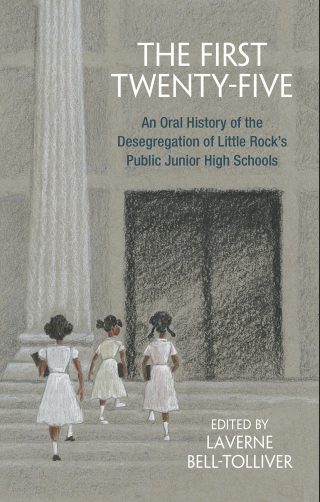On May 23, 1961,” Dr. LaVerne Bell-Tolliver writes in the opening lines of her new book, “the Little Rock School Board designated twenty-five students to be the first African-Americans (then called “Negroes” or “Coloreds”) to attend four of the five public Little Rock junior high schools.” For the next 18 pages, the story is straightforward, easily digested. Although it deals with a branch of history that’s been largely overshadowed by its counterpart—the desegregation of Little Rock Central High School in 1957—the overview that these pages provide is clear and concise and lays a contextual foundation for what’s to follow. It’s an account that is, in tone and timbre, like so many others.
The second part, however, is what makes it stand apart from so many histories of that era. If the first section was a photograph, then the second section—appropriately titled “Our Stories”—is where the formerly still image starts to move, speak, come to life. For just over 200 pages, we hear, firsthand, from 18 of the 25 students who integrated the once exclusively white junior high schools. The stories they tell are candid and raw. Now so many years removed from their experiences, the students give intimate accounts of their lives then—the loneliness, the prejudice, the small bits of joy they found day to day.
It can be a shocking thing, to hear these that had been silent for so long. As Dr. Bell-Tolliver writes, “This oral history approach provides them with something they did not have in 1961 and 1962: the opportunity to break the silence.” In the excerpt that follows, we hear from the individual who desegregated Forest Heights Junior High School—the only instance where there was just one African-American student who went to class. The student in question? Dr. Bell-Tolliver herself. —jph
Read the full feature here.
See also:
LaVerne Bell-Tolliver interviewed by Kyle Kellams of KUAF.
LaVerne Bell-Tolliver and Dr. Kenneth Jones interviewed at KUAR.
“It might seem redundant to remind ourselves that the people featured in video footage of news stories — the black-and-white images capturing a precise moment in our shared past — are actual human beings, not simply a visual complement. We forget this, though; the images today move too quickly. The impressions are too fleeting, and there’s a future-seeking urgency to click or swipe to the next thing before we even have a chance to fully grasp what we’re seeing. Often, it takes a book like Dr. LaVerne Bell-Tolliver’s “The First Twenty-Five: An Oral History of the Desegregation of Little Rock’s Public Junior High Schools” to cut through the Hollywood sheen of made-for-television history and punctuate the lives of those who shaped and changed our world. ”
—Matt Baker, Arkansas Times, February 2015

